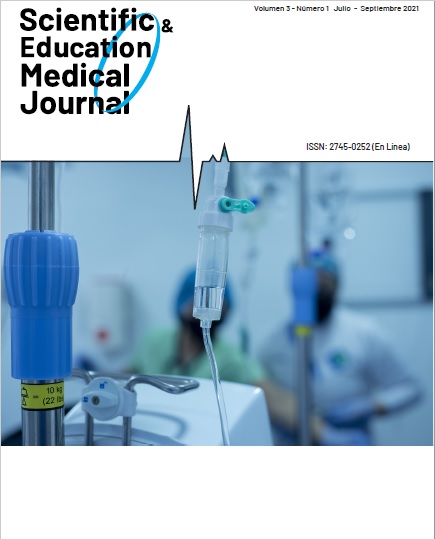Burnout
Abstract
Objective: To carry out a comprehensive review of the literature to describe the main consequences of the covid 19 pandemic in the exacerbation of burnout syndrome and at the same time seek strategies for its prompt and adequate identification, approach and intervention according to the international guidelines learned over the years. of the pandemic.
Methodology: A systematic review of the literature will be carried out, from which 100 research articles corresponding to the years 2005 - 2021 will be obtained with emphasis on the years 2020 and 2021 to proceed to a critical reading where the relevance of each one is found and thus be able to generate a robust knowledge about the subject to identify and collect the most relevant data that should be disclosed in this article and finally be able to produce a clear and consistent protocol about the definition, signs and symptoms, diagnostic and therapeutic approach and preventive strategies on burnout syndrome during the COVID-19 pandemic that allows us to have enough conceptual knowledge to face future challenges in mental health that may come in years to come.
Conclusion: Burnout syndrome is a pathology that has been trying to make visible over the years but it is only in 2020 that it is really given a true value in the health area, given the coping with a pandemic that was not expected and that managed to overwhelm the health systems and with it its staff, which is why multiple diagnostic and therapeutic approaches have been sought during the last year for those people where stress overflows and achieves generate in them the clear symptoms of burnout including emotional exhaustion, loss of self-esteem and overflow of emotions leading to depersonalization. As soon as these symptoms appear, it is vitally important to achieve a recognition of them and make a therapeutic and comprehensive approach where it is achieved from cognitive behavioral therapy, group meetings and corrective work activities in common agreement with the worker, avoiding prolonged times of absenteeism or symptomatic worsening that lead to requiring therapeutic management to control anxiety, depressive symptoms or even insomnia. Finally, what has been learned throughout the critical reading is that the main basis for the management of the disease is prevention through education in coping strategies, search for stress triggers and avoidance of complications.
Downloads
Published
How to Cite
Issue
Section
License
Atribución – No comercial – Compartir igual: Esta licencia permite a otros distribuir, remezclar, retocar, y crear a partir de tu obra de modo no comercial, siempre y cuando te den crédito y licencien sus nuevas creaciones bajo las mismas condiciones.
Attribution-NonCommercial-ShareAlike 4.0 International


